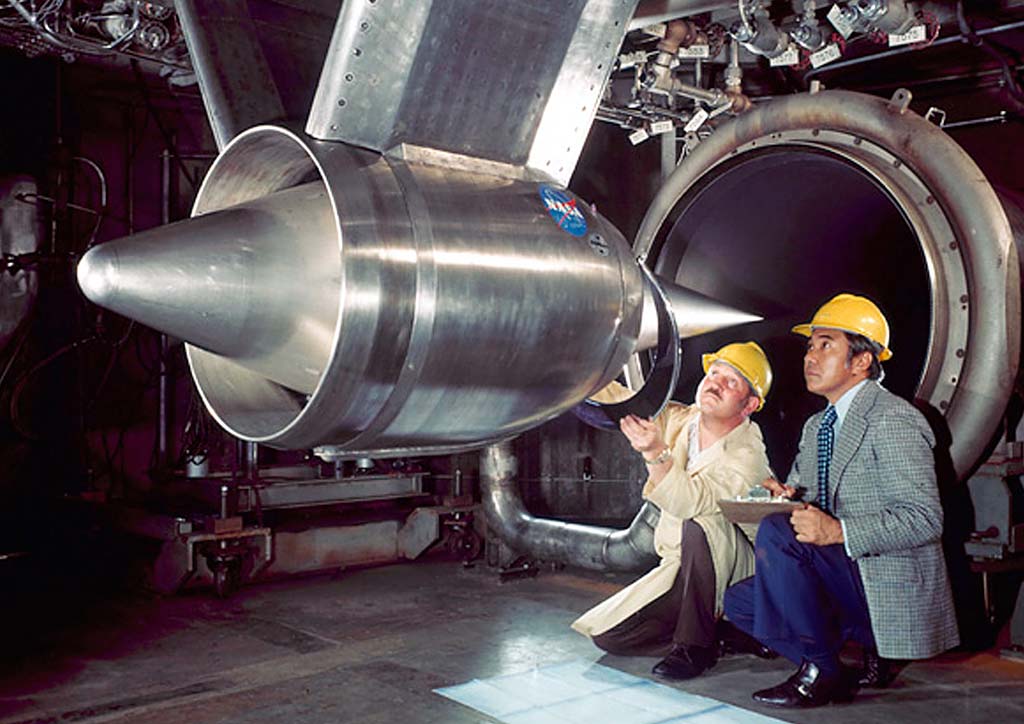
Hypersonic Research Engine in the Hypersonic Tunnel Facility
A hypersonic ramjet, or scramjet, installed in the test section of the new Hypersonic Tunnel Facility at National Aeronautics and Space Administration’s (NASA) Plum Brook Station. Langley Research Center contracted the Garrett Corporation in the mid-1960s to design and construct a ramjet that could operate at speeds between Mach 4 and 8. The result was the Hypersonic Research Engine, a water-cooled liquid hydrogen-based heavy-wall engine. The engine, referred to as a scramjet, was 86-inches long and had an 18-inch diameter cowl. Lewis began designing a large hypersonic tunnel in 1966. In order to reduce expenses, NASA engineers converted the Hydrogen Heat Transfer Facility at Plum Brook into a hypersonic free-jet tunnel. They added a mixer-nozzle and exhaust systems to the existing pebble bed heater. Existing control units and instrumentation were also employed for the new facility. The Hypersonic Tunnel Facility included three different size nozzles that allowed the air velocity to be varied to Mach 5, 6, or 7. When Langley undertook Hypersonic Research Engine project in the mid-1960s, it planned on testing it on the X‒15 aircraft. The cancellation of the X‒15 program led to tests of the new scramjet in a Langley 166 wind tunnel and Lewis’ Hypersonic Tunnel Facility. The tests demonstrated the performance, operation, structural design, and controls for the complete scramjet engine system.
- X

























